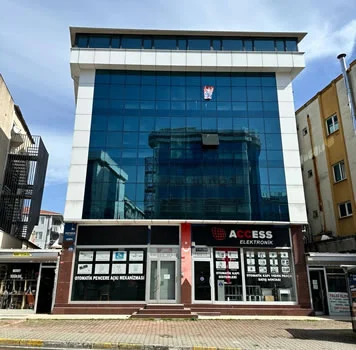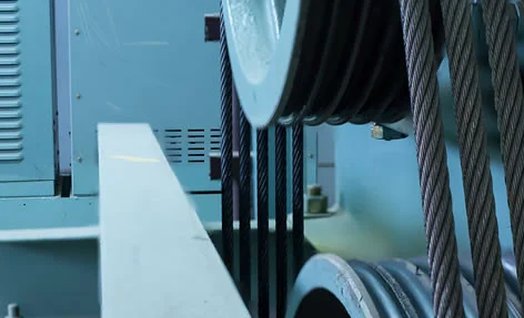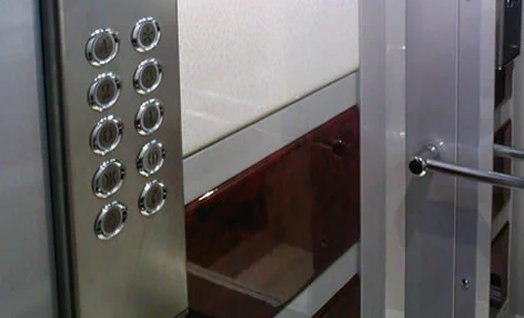CE Mark for elevators
Elevators, like machines and many other products, are covered by the New Approach directives and must have the CE mark.

Whether it is the assembly of elevators or the production of safety components, in both cases the requirements of the 2014/33/EU Elevator Directive must be met in order to place it on the market and affix the CE marking.
The 2014/33/EU Elevator Directive applies to all elevators installed in the European Economic Area (EEA).
Ensuring that your elevators comply with safety and legal requirements is a crucial element in reaching the market.
As EUTEST Certification, our accreditation processes have been completed in the following scopes and we provide services for the CE marking of elevators:
For Elevators;
- EU Type Examination of Elevators (Module B)
- Compliance of Elevators Based on Unit Verification (Module G)
- Type Conformity of Elevators Based on Product Quality Assurance (Module E)
- Compliance of Elevators Based on Design Review with Full Quality Assurance (Module H1)
- EU Design Review Certificate in accordance with clause 3.3 of Module H1
- Type Conformity of Elevators Based on Production Quality Assurance (Module D)
As stated in the "HEALTH AND SAFETY REGULATIONS FOR THE USE OF WORK EQUIPMENT" published in the Official Journal dated 25.04.2013 and numbered 28628, there is no accreditation obligation for the periodic inspection of work equipment, however according to the aforementioned regulation, the accreditation obligation will begin for the following equipment after 31.12.2023:
1. Tower cranes
2. LPG tanks and their means (underground and above ground)
3. Escalators
4. Suspended access equipment.
CE Mark is a conformity and safety mark created in 1985 in order to ensure the free movement of goods between countries within the framework of the Customs Agreement of the European Union.
The CE mark is a mark that indicates that the products sold in Turkey and the European Economic Area (EEA) are evaluated to meet the high safety, health and environmental protection requirements and their conformity. For this reason, "CE" marking is a mandatory requirement for a product to be sold and used in Turkey and the EEA.
By affixing or ensuring that the "CE" mark is affixed to its product or to the information plate on the product, the manufacturer is deemed to have declared such it is under his own responsibility a certain the product complies with the relevant technical regulation or regulations that require this marking and a particular the product has been subjected to all necessary conformity assessment procedures.
CE” mark;
It consists of the letters "CE" and has a minimum size of 5 mm, unless otherwise stated in the relevant technical regulation.
In cases where it is not possible to affix the CE mark on the product or its permanence cannot be guaranteed due to the nature of the product, it is placed on the product's packaging and the documents accompanying the product in a visible, legible and indelible manner.
CE marking is mandatory in all countries that are members of the European Union.
Turkey and Switzerland are not members of the European Union, however the CE mark is obligatory in these countries just like the European Union.
It is the proving/certification that a manufactured product complies with previously accepted technical regulations or harmonized standards and meets minimum health and safety requirements for humans (and as appropriate, animals) and the environment.
If a product is placed on the market or put into service, it must have the CE mark.
For example, in the scope of the 2006/42/EC Machinery Directive, “Put Into Service” refers to the first use of the machine for its purposes.
In addition to the tests, before the machine is put on the market;
Documentation (technical file),
Labeling,
Drawing up the EC/EU Declaration of Conformity and
If necessary, evaluations by third-party certification bodies
are also required.
If the components of the final machine are in scope of CE regulation, they must be chosen from CE marked components. However, it is not sufficient by itself to select all components as CE marked, to confirm CE requirements for final products. The final product should be evaluated acc. to Machinery Directive and its nonconformities should be determined.
For example, a CE marked light curtain is used, but it may not be positioned at a sufficient distance, not selected with appropriate resolution, and its connections may not meet the requirements.
The machine was established to improve the design and make revisions in line with customer demands. In any case, changes will be made on the machine.
This, does not constitute an excuse for delaying CE marking and taking safety measures. All responsibilities regarding CE marking must be fulfilled before the machines are placed on the market or put into service for the first time to use in its intended purposes.
Adding or replacing a machine on a CE marked production line may require reassessment. The interaction of the added or modified machine with other machines is taken into account. If additional risks arise, these additional risks affect other machines and if the existing measures are not sufficient for these new risks, the production line must be re-evaluated according to the Machinery Directive.
It is possible if the regulation to which the product is subject allow it. However, CE marking should not be underestimated and should not be taken as just a marking or a declaration.
In order to affix the CE mark to the product, all technical safety requirements of the product must be fulfilled, all documents that make up the technical file must be prepared and, if necessary, safety tests must be carried out.
In addition to the above, when deemed mandatory in the regulations, the product must also be assessed and certified by third-party organizations (NOBO).
FOR MORE INFORMATION
Contact us

EUTEST
Altınşehir Mh. Kelebek Sk. No:4 D:4
Ümraniye/İstanbul
Phone: +90 216 540 49 59
E-Mail: [email protected]





